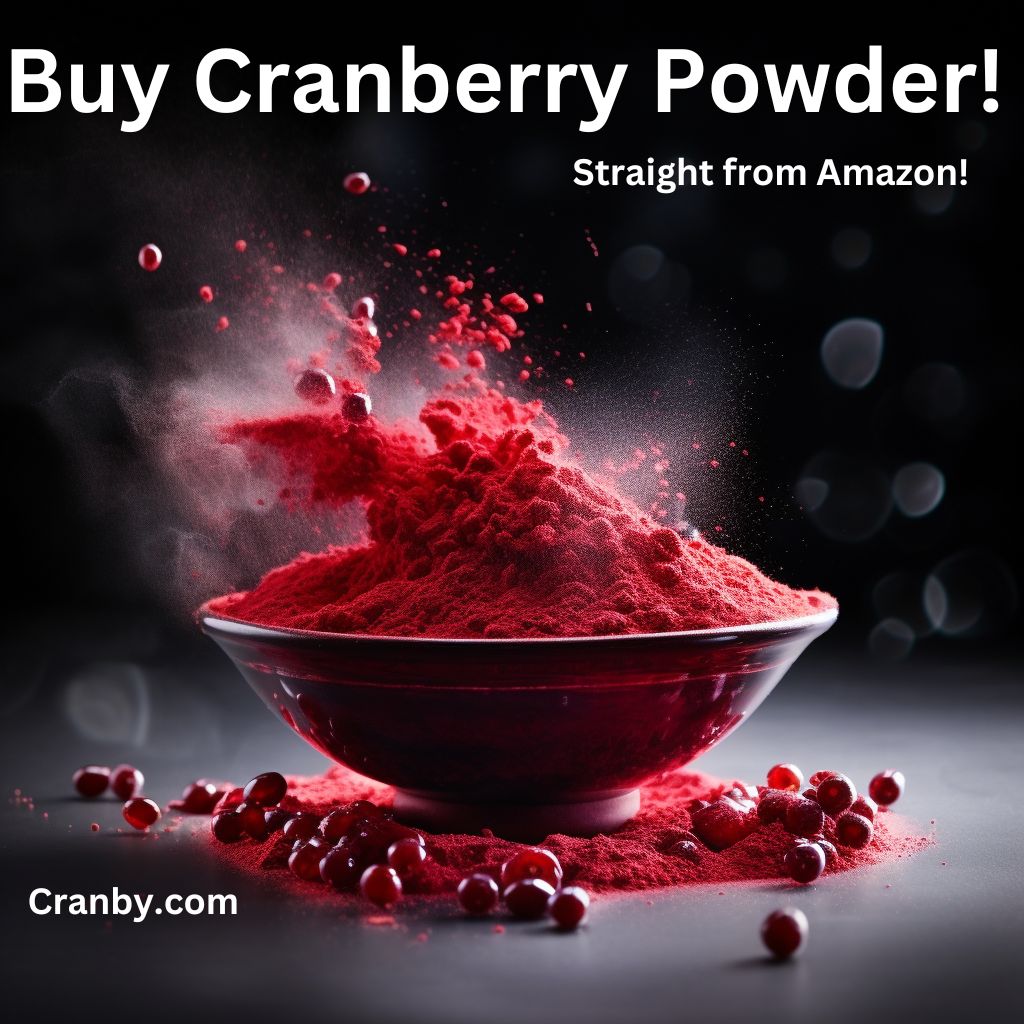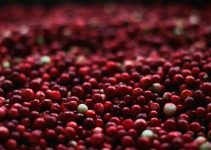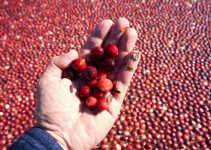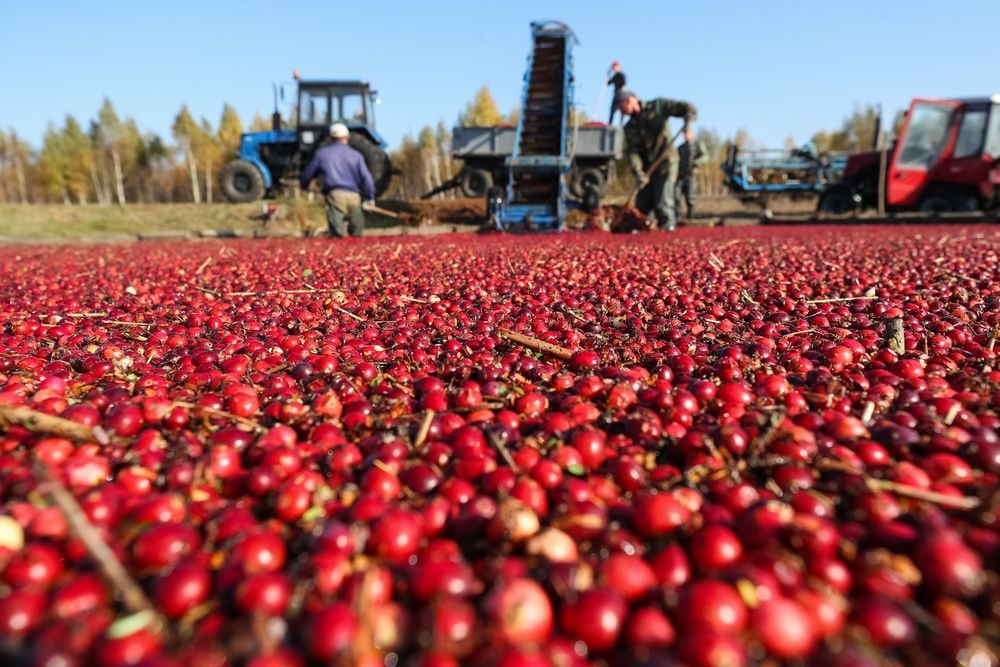
How are Cranberries Grown
…
Cranberries are classified as a fruit and are only 1 of 3 fruits that are native to North America.
About the Cranberry
Cranberries grow on short shrubs and vines. It’s a perennial plant, meaning the fruit can grow on the same vine each year as long as it stays alive. On Cape Cod, in Southeastern Massachusetts, some cranberry vines are over 150 years old.
While I stated that cranberries are native North American plants, they are only grown in five states.
Cranberries grow best in wet marshy ground called bogs. This environment is better able to tolerate colder temperatures. They need to be grown in an area that has enough of a cooler climate to force the plants to become dormant for a while (about three months). Being in this phase is necessary for the vines to be able to produce fruit for the following season. This is why they are grown in the northern states.
Interestingly enough, the biggest lovers and importers of cranberries are mostly warm-weather states. California, Florida and Texas can’t get enough of those tart, red berries. They are also exported to the UK, Mexico, Germany and France.
In 2019, the US produced about eight million barrels of cranberries, with each weighing close to 100 lbs. Approximately 1/5 of all cranberries produced ever in a single year get eaten during Thanksgiving as a sauce to accompany very large turkey dinners.
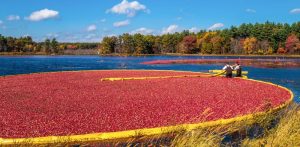
Cranberry Farm
How are they Farmed?
For thousands of years, ever since the North American ice glaciers started to melt and pull back, cranberries grew in the wet, boggy areas of New England and the Upper Midwest. Some of these marshes are still active today. As of now cranberries are mainly grown in man-made bogs so farmers can better cultivate their crops.
A very important component of growing cranberries is that they need a very specific environment. The vines thrive in layers of gravel, then acidic peat soil and sand.
The growing season goes from April to November, with the harvesting done in the fall, usually running from the middle of September to the middle of November.
How are they Harvested?
So they grow on the shrubs throughout the spring and summer and in the fall they are harvested.
There are two different types of harvesting; wet and dry. About 90 percent of the entire farmed cranberry crop is harvested through wet harvesting.
DRY HARVESTING – 10%
The dry harvested cranberries are picked so that they can be consumed fresh. These berries end up fresh in your local grocer or farmer’s market.
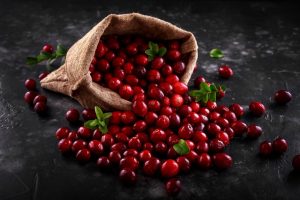
Fresh Cranberries from a Dry Harvest
The dry harvesting equipment is called a raking machine (or a harvester for larger operations). The farmer walks along the cranberry beds and harvests the berries, loading them into sacks. Later, workers will go through the berries, throwing out the bad ones and loading up the rest into the bags that head to your local grocer.
***It’s important to note that the cranberry vines need to be completely dry for successful harvest. Otherwise the berries will be ruined.
WET HARVESTING 90%
The farming process for wet harvesting is bit more complex. To start off the bog gets flooded with about 2 feet of water about 12 hours before they begin. The next day, the farmers walk through the bog with those long, rubbery fishing pants, using either large rods or machines called “egg-beaters” to gently prod at the vines which loosen the cranberries and makes them float to the top.
*** Cranberries have tiny pockets of air in them which is what makes them float.
Once that happens they simply gather all the berries and load them into trucks. These cranberries are what make up all the rest of the cranberry-based products you eat, from cranberry sauce during the holidays to dried cranberries, and especially the different cranberry juices we enjoy.
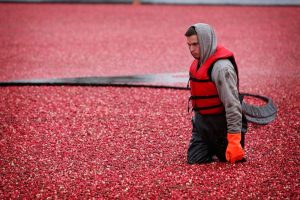
Wet Harvesting Cranberries
After Harvest & At the Table
After harvest, the cranberry beds begin to go into their dormancy phase. When the cold of winter begins, the bogs are flooded with water again to make a layer of ice that serves to protect the plant from harsh weather.
In the springtime, the cycle begins once again as the vines grow flowers. Then sometime in early summer the petals fall from the flowers, leaving small green buds that will grow into cranberries.
AT HOME
Fresh cranberries will keep in the fringe for about 21 days. Eating these right, red berries raw, allows you to experience a sour Vitamin C loaded snack. Usually though people will consume these tart pieces of fruit in the form of jams, sauces, or dried snacks.
The most popular being sauces to be served with turkey. U.S. Cranberry Chutney is enjoyed with meaty game dishes or cheeses. Dried fruits and cranberries in particular keep almost all of their nutrients, which is why dried cranberries, or Craisins as they are called, are very popular.
Cranberries are a fascinating and nutrient dense little fruit. The next time you enjoy a tall glass of fresh cranberry juice, or take a spoonful of jelly with your turkey dinner, remember what it took to get berries to your table.
From the melting ice glaciers thousands of years ago, to the hard-working farmers working outside in those beautifully spectacular, marshy peat bogs.
– Cranby

